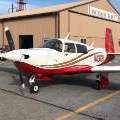Mooney Trim System
-
Members Online
- qwerty1
- drpovation
- Danb
- Utah20Gflyer
- KSMooniac
- 201er
- dkkim73
- Ronnie Pool
- Skyland
- eman1200
- Hank
- Marvin
- JB2000
- TCC
- richardbrochu27
- Skates97
- ToddCC22
- 1980Mooney
- Crawfish
- Ed de C.
- toto
- 201Mooniac
- Wingover
- IvanP
- Zulee
- tankles
- larryb
- gcb
- McMooney
- Coachella Bravo
- GeeBee
- 1967 427
- Taz
- CAV Ice
- philiplane
- M20Jon
- Bolter
- Ibra
- DonMuncy
- SKI
- PT20J
- Igor_U
- Ragsf15e
- DCarlton
- Parker_Woodruff
- PeterRus
- ElkoRandy20J
- AshAsh
- hypertech
- redbaron1982
- peterl
- Shortround
- Nico1
- Troy Jordan
- shawn-201zb
- Fritz1
- Kelpro999
- MDMooney
- bigmo
- Jim F
- raymondscott0321
- Deniz


Recommended Posts
Join the conversation
You can post now and register later. If you have an account, sign in now to post with your account.